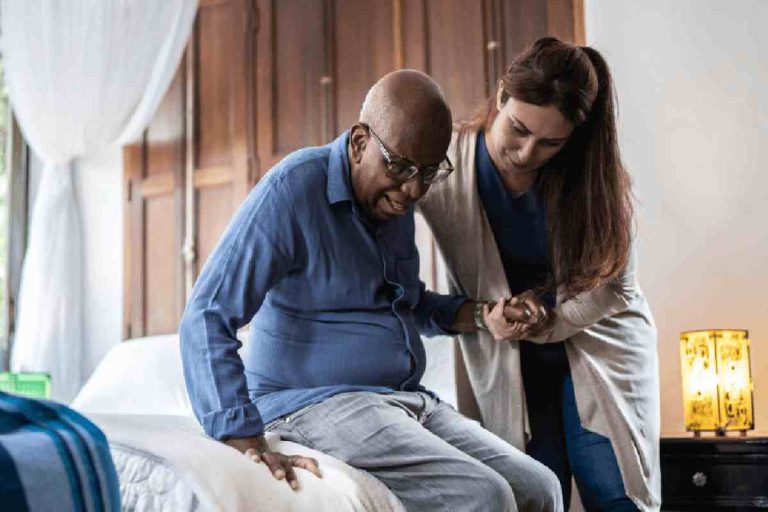Emilio Parga: Building Communities That Handle Grief Before They Have To

Most organizations and families think about grief support only after tragedy strikes. They scramble to respond, searching for counselors or resources or someone who knows what to do. The crisis forces learning that could have happened proactively. Emilio Parga argues this reactive approach guarantees communities will be underprepared when they need support most.
His alternative is building grief literacy before loss occurs. Not because it’s morbid to plan for death but because it’s practical. Every community, family, workplace, and team will eventually face loss. The question is whether they’ll have frameworks in place or improvise under pressure with uneven results.
As founder and CEO of The Solace Tree, Parga works with communities in both crisis and preparation modes. The difference in outcomes is striking. Groups that develop grief literacy proactively respond to actual loss with greater cohesion, clearer communication, and faster recovery. They know what to say, how to support each other, and what pitfalls to avoid because they’ve learned before stakes were highest.
Consider two schools facing similar tragedies. In the first, a student dies unexpectedly and the administration reacts with panic masked as competence. They draft announcements, arrange counseling, and hope they’re doing it right. Teachers feel unprepared to address student questions. Parents don’t know what to tell their children. Students sense the adults’ discomfort and often withdraw rather than seeking support. The community stumbles through, meaning well but causing unintended harm through avoidance and inconsistency.
Now consider a school that invested in grief literacy training before loss occurred. Teachers learned age-appropriate ways to discuss death. Administrators developed response protocols based on best practices. Students participated in workshops about processing loss and supporting peers. When tragedy strikes, the community still experiences pain, but they have tools to navigate it. Teachers answer questions honestly rather than deflecting. Parents facilitate conversations rather than avoiding them. Students support each other because they learned how. The grief is no less real but the response is dramatically more effective.
The same pattern plays out in families. Those who talk about death before experiencing it create foundations for healthier grieving. Children who learn that death is part of life, that all feelings are acceptable, and that talking about loss honors rather than dishonors the deceased develop resilience that serves them when actual loss arrives. Families with these conversations already established don’t have to figure out communication patterns while drowning in grief.
Parga’s career demonstrates both the need for this work and its effectiveness. His recognition includes a PBS Emmy Award, Communicator Awards of Excellence and Distinction, designation as Citizen of the Year, and scholarships to national conferences on pediatric grief support. But the real validation comes from communities that navigated loss successfully because they prepared proactively rather than reacting desperately.
The cultural resistance to this approach stems from discomfort with death. American society prefers not to think about mortality until forced to confront it. Planning for grief feels pessimistic or morbid. But this avoidance guarantees worse outcomes. Communities that refuse to prepare are communities that will respond poorly when preparation would have made all the difference.
What grief literacy actually involves is surprisingly practical. It’s learning language that creates safety rather than discomfort. Understanding developmental stages so support adapts appropriately. Recognizing common grief responses so they don’t feel abnormal. Developing listening skills that help rather than hurt. Building frameworks for collective processing that strengthen rather than fracture communities. None of this requires clinical degrees, just willingness to learn before crisis forces it.
For workplaces, grief literacy transforms how organizations function beyond crisis response. Teams that learn to talk about hard things together develop trust that improves everyday collaboration. Leaders who demonstrate emotional intelligence inspire loyalty during normal times, not just emergencies. Organizations with these capacities attract and retain talent because employees recognize authentic care versus superficial benefits.
The Solace Tree offers training and workshops that build these capacities proactively. Rather than waiting for someone to die, schools can prepare teachers and students for inevitable future losses. Companies can train managers to support grieving employees before those employees exist. Athletic programs can build grief support into team culture rather than treating it as crisis intervention. The investment pays dividends when actual loss occurs but also improves functioning regardless of crisis.
Looking ahead, Parga envisions grief literacy becoming standard rather than exceptional. He wants schools to teach it alongside other life skills. Organizations to include it in leadership development. Families to discuss it as naturally as other aspects of child development. The goal isn’t making communities obsessed with death but ensuring they’re competent when death inevitably arrives.
The obstacles are cultural more than logistical. Shifting norms requires sustained effort and visible success stories. Schools need to see that grief education doesn’t traumatize students but prepares them. Companies need data showing that emotional intelligence training improves retention and productivity. Families need permission to have conversations that feel uncomfortable but prove valuable. These shifts happen through demonstration more than argument.
What Parga has learned over years of this work reshapes assumptions about preparation and resilience. Communities often believe they’ll rise to challenges when necessary, that crisis brings out the best in people. Sometimes this happens. But more often, crisis reveals existing capacity or lack thereof. Groups that prepared respond effectively. Those that didn’t often fracture or cause unintended harm despite good intentions. Resilience isn’t innate; it’s built through practice and preparation.
The practical applications extend beyond grief. Communities that develop capacity for difficult conversations become better at addressing all challenges. They handle conflict more constructively. They navigate change with less dysfunction. They support members through various hardships with greater consistency. The skills learned for grief support turn out to be foundational communication and emotional intelligence skills with broad application.
For educators, this means recognizing that grief literacy belongs in curricula alongside other essential life skills. Young people will experience loss. Teaching them to process and communicate about it serves them as much as teaching them to read or calculate. Schools that embrace this shift report students with greater emotional awareness, better peer support, and improved ability to seek help when needed.
For organizational leaders, it means treating grief literacy as leadership development, not HR policy. Managers who can support grieving team members without discomfort become managers people want to work for. Executives who model appropriate vulnerability build cultures of psychological safety that benefit all aspects of operations. The investment in these capacities yields returns far beyond crisis response.
For families, it means normalizing conversations about death and loss before urgency forces them. Reading books about grief with children. Discussing how the family would support each other if someone died. Sharing stories about deceased relatives that keep memory alive. These conversations feel awkward initially but become natural with practice and prove invaluable when actual loss occurs.
The challenges of building proactive grief literacy are real but surmountable. It requires shifting resources from reactive crisis response to preventive capacity building. It demands courage to address topics most people avoid. It takes sustained effort to change cultural norms that treat grief as private crisis rather than communal skill. But communities that make this investment consistently report outcomes that justify the effort.
What The Solace Tree offers is roadmap and support for this shift. Training that makes grief literacy accessible rather than requiring clinical expertise. Workshops that normalize conversations about death and loss. Frameworks that communities can adapt to their specific contexts. Partnership that helps organizations and families build capacity before they desperately need it.
The work continues because the need remains urgent and largely unmet. Most communities still lack basic grief literacy. They wait for tragedy to force learning that could have happened proactively. They improvise under pressure when preparation would have served everyone better. The cost shows up in fragmented relationships, missed opportunities for connection, and people who carry grief alone because their communities never learned to support it collectively.
The invitation to every community, organization, and family is straightforward: don’t wait for grief to force learning. Build literacy now while stakes are lower and thinking is clearer. Invest in frameworks before crisis demands them. Learn to talk about death and loss before doing so under time pressure and emotional overwhelm. The preparation won’t prevent pain when loss occurs, but it will transform how effectively communities navigate that pain together. And in a life where loss is inevitable, that transformation makes all the difference between fracturing and strengthening, isolation and connection, chaos and grounded response.











